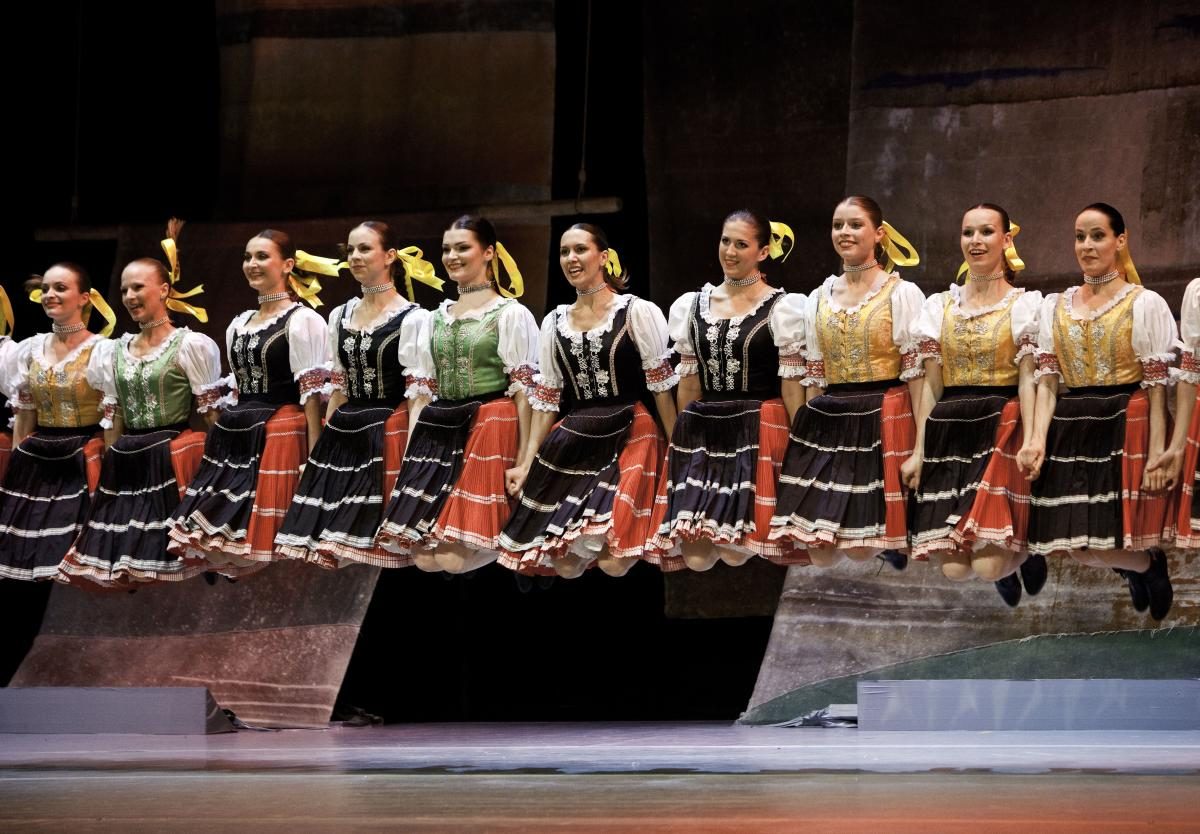London 10th August 2012 (Erin Johnson I bachtrack.com)
The programme was as diverse as it was entertaining, with dances from the many different regions of Slovakia, and each dance boasted more elaborate costumes and props than the last. It was an evening to remember, with dance and music that celebrated Slovak culture and invited everyone in the audience to join in the fun.
This evening was my first formal encounter with Slovak folk dance and music, so while my dance knowledge gave me a base for appreciating the work, it was exciting to sit back and watch all the different components of the performance come together. I was immediately struck by the intricate spatial patterns created by the dancers, as well as the exacting unison work performed completely in sync with the music. Adorned with sweeping skirts and huge smiles, the women practically glided around the stage, sometimes assisted by their male counterparts, who were the epitome of masculinity and bravado.
The dances featuring all men immediately stood out because of the bold and daring tricks performed: men swinging axes or long sticks, while performing incredibly high jumps or complex turns, sometimes in complete unison. The timing and rhythm needed to correctly execute these movements was instantly apparent, but the dancers never seemed to even break a sweat. Acting and comedy came out in the Širákový (“Hat Dance”), where the men trade hats to an ever-quickening tempo, passing down the group until one man is deemed the winner. However, more serious and virtuosic dances like Šarišskí parobici(“Recruits from Šariš”) were performed with military-like precision, with the spurs on their boots clicking in time.
To contrast these segments, the womens’ dances were often subtle and demure, especially Vitaj Jar (“The Spring Arrives”), where the women wear all white and walk smoothly in beautiful patterns. This dance, as well as many others, was accompanied by beautiful singing that blended seamlessly with the music and added greatly to the dancing. But don’t let these soft dances fool you: for every calm and graceful dance there was another in which the women were right alongside the men, spinning, jumping and performing eloquently complex footwork that showed off their technical abilities.
Adding a further dimension to the programme was the lively musical accompaniment by Golden Violin, an orchestra that was as expressive as the dancers themselves. Whether it was during the dances, or during the few musical interludes between dances, the musicians obviously poured their hearts into the music they were creating and lifted the performance with their energy and vivacity.
Behind the dancing was an interesting and somewhat random backdrop of colourfully-lighted strips of fabric, that didn’t subtract from the show, but didn’t much add to it either. The same thing could be said for the lighting, which was generally bland and unimaginative.
Slovak National Folklore Ballet Lúčnica’s Forever Young triumphed in its ability to show the many different types of Slovak dancing, and translate it to the concert dance setting of Sadler’s Wells. Despite the formal venue, Lúčnica transformed the space into a welcoming and relaxed environment and the audience seemed eager and willing to follow each new turn of the programme. Whether you are familiar with Slovak dance and culture, or are experiencing it for the first time, Forever Young is a fun foray into the diverse and high energy dances of Slovakia.











